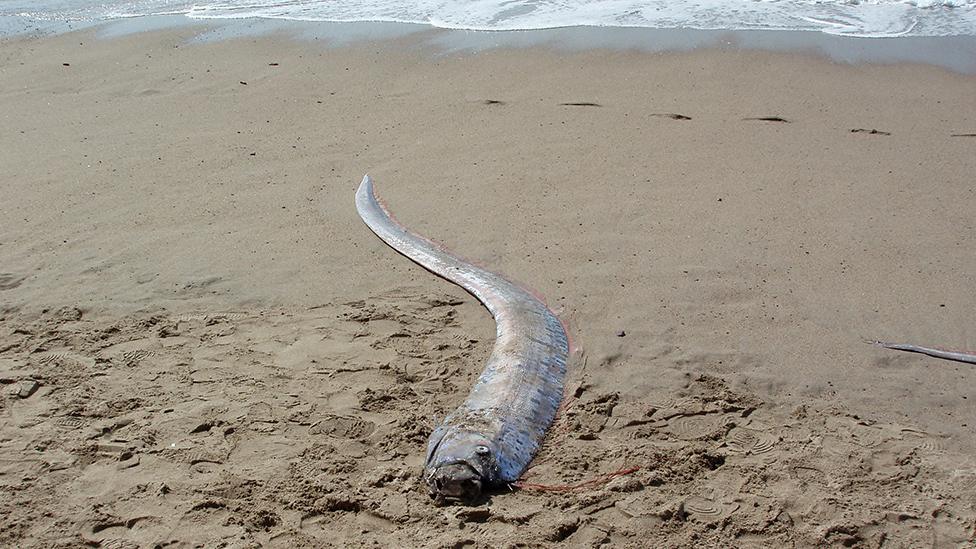Natural History Museum will showcase 'fantastic beasts'
- Published

The Erumpent, a rhino-like animal, appears in Fantastic Beasts and Where to Find Them
It's one of the more remarkable specimens taken into London's Natural History Museum. It's certainly one of the most "fantastic".
The horn comes from an Erumpent, a fictional beast created in the mind of author JK Rowling.
It's going to feature in a major new exhibition at the South Kensington institution this spring, in which the extraordinary creatures of the Harry Potter universe are used to shine a light on some of the "magical" animals that exist in the real world.
The NHM is describing the show as its most ambitious to date.
It's a joint venture with Warner Bros, who own the film versions of Rowling's Potter books and their Fantastic Beasts spin-offs, together with the BBC, whose Natural History Unit in Bristol, will be filming a companion programme.
"We want to show people that the natural world is just as amazing as the mythical, wizarding world," said Clare Matterson, executive director of engagement at the NHM.
Northumberland and how it inspired Fantastic Beasts
The exhibition will put 50 specimens from the museum's world famous collections next to props from the Potter movies. Interactive displays will compare and contrast different animals.
"You'll recall the Erumpent's mating dance from Fantastic Beasts. We'll be making comparisons with the peacock spider, which has its own extraordinary movements that it uses to attract a mate," explained the NHM executive.
"Then there's something in the magical world called a Demiguise, which, as the name suggests, has ways of making itself disappear. And, of course, there are all sorts of examples in the natural world but one of the most famous is the octopus which can change its colours and camouflage itself, blending into its natural surroundings."
WATCH: The Crimes of Grindelwald visual effects
The exhibition will also point out some of the direct links between fact and fiction.
A good illustration is the giant oarfish, the world's longest bony fish. This animal is thought to be the inspiration for many of the myths that exist around sea serpents.
It's a theme that will be picked up in the BBC companion programme, which will be fronted by actor Stephen Fry, best known in this context as the voice of the Harry Potter audio books.
The BBC One special is going to visit places such as the frozen steppes of Siberia and the caves of Madagascar to explore the origins and stories of mythical beasts and to draw the connections with species that are alive today or have not long gone extinct.
Stephen Fry said: "I could not be more delighted to be a part of this magnificent opportunity for us Muggles to show the wizarding world that the fantastic beasts in our world are more than a match for theirs.
"Joining forces with the combined powers of the fabulous BBC, its legendary Natural History Unit and the magical Natural History Museum we hope to be able to bring you closer than you've ever been to some of the most spectacular and extraordinary creatures ever seen."

The peacock spider has a few moves of its own when it comes to attracting a mate
Clare Matterson added: "Ultimately, what we're trying to do is get that important message across that we should care more about the animals on this extraordinary planet we inhabit."
Tickets for the exhibition - Fantastic Beasts: The Wonder of Nature - will go on sale soon. The NHM has an alert system, external if you want to know when they are available to book.
The show will run for seven months before heading out on an international tour.

The giant oarfish probably lies behind many of the sea serpent myths
Jonathan.Amos-INTERNET@bbc.co.uk, external and follow me on Twitter: @BBCAmos, external